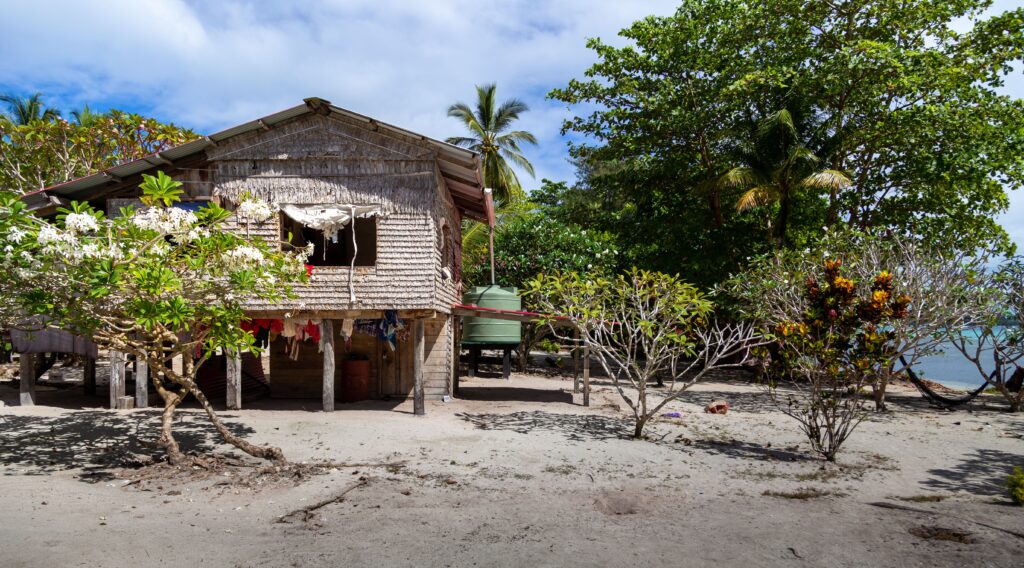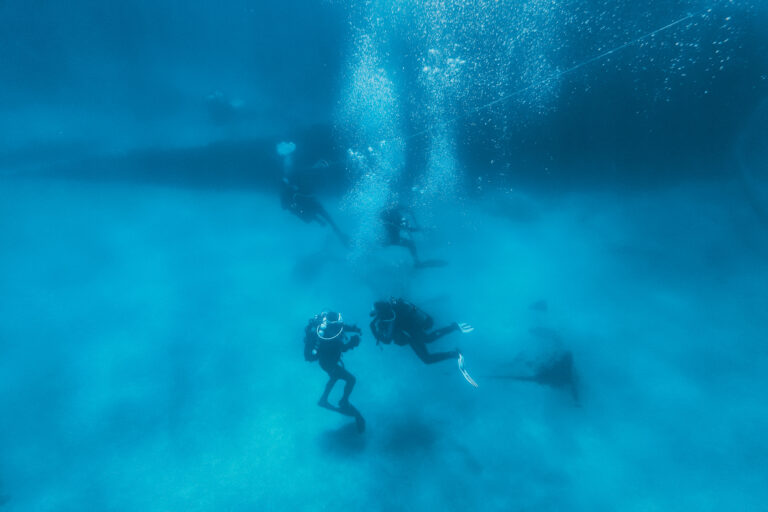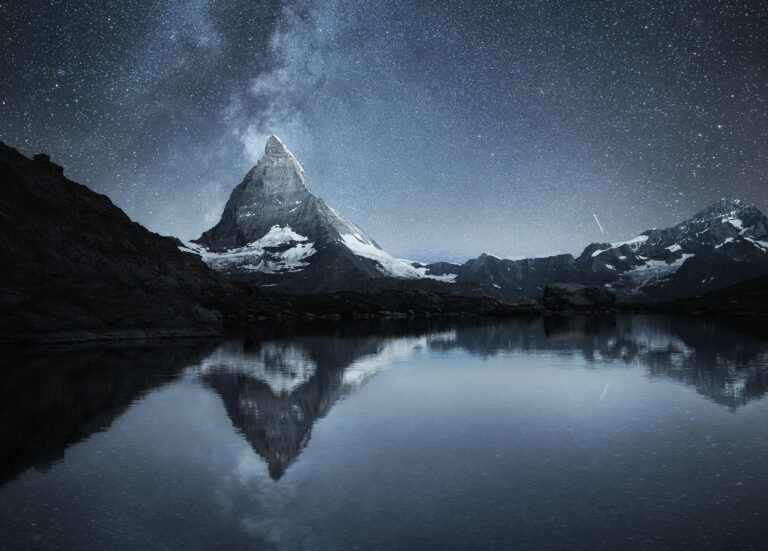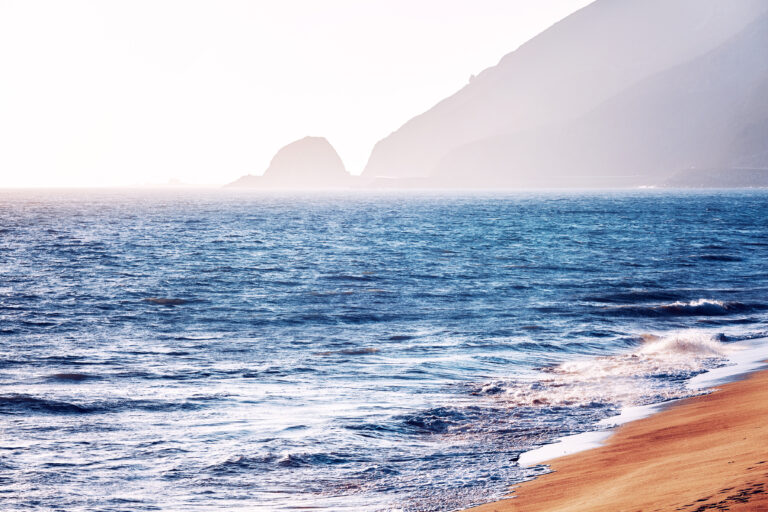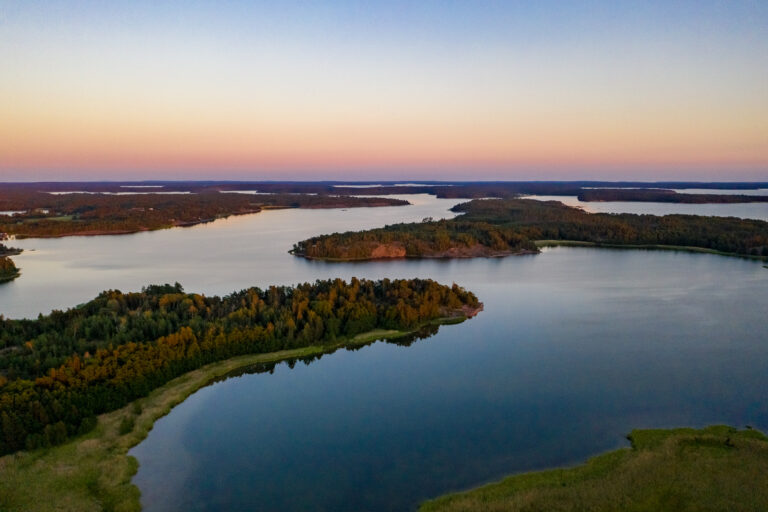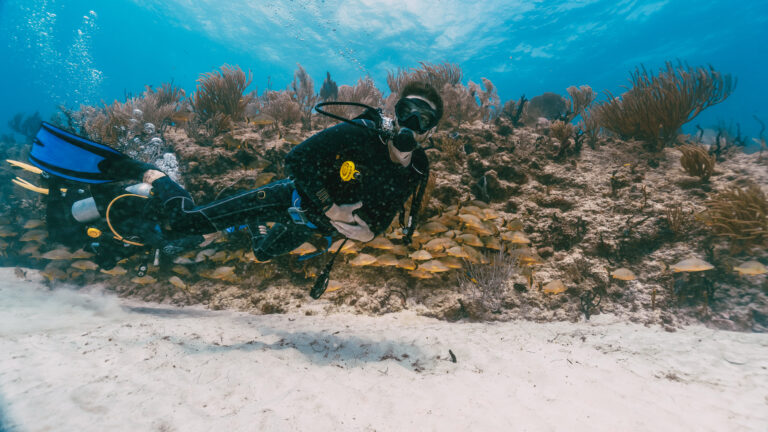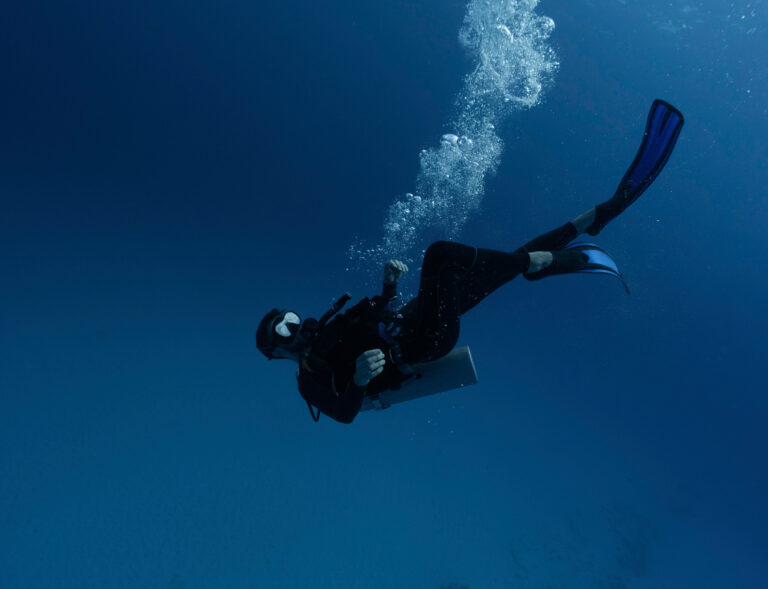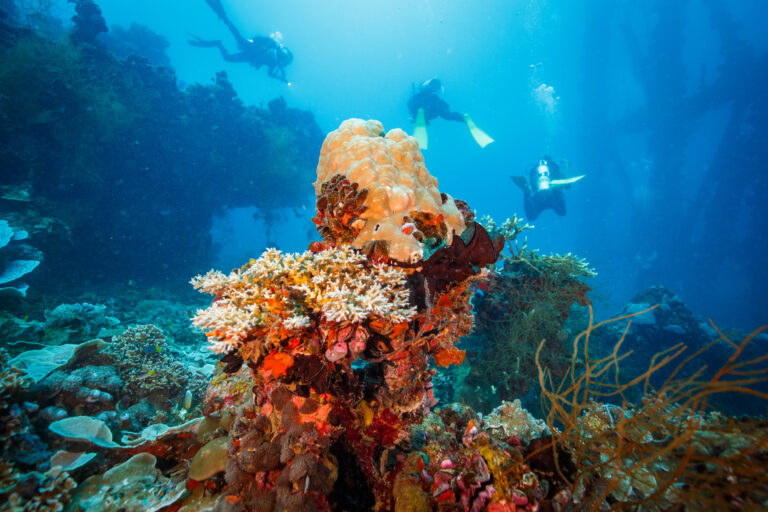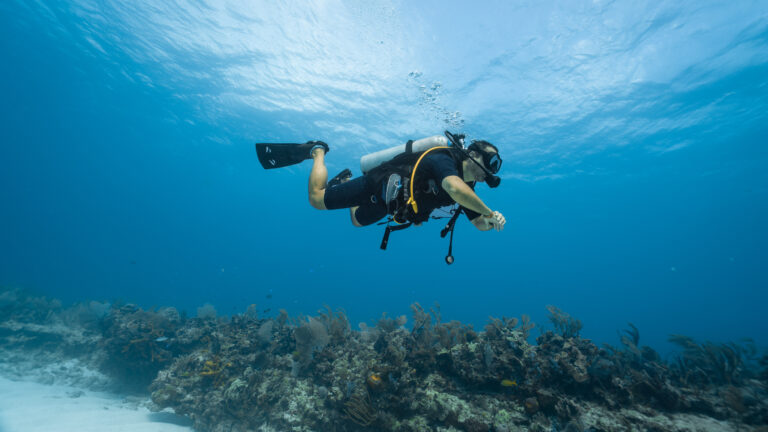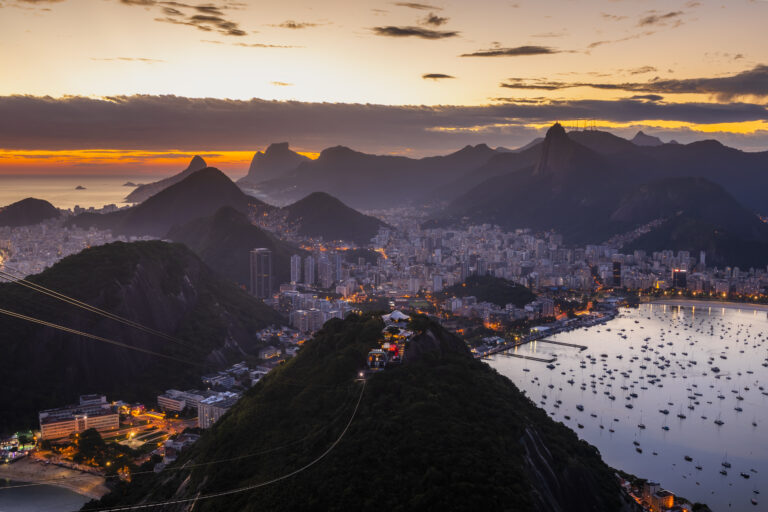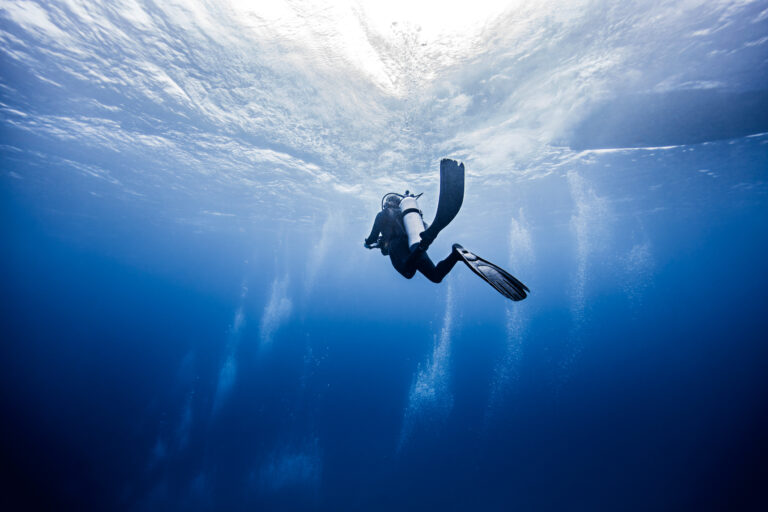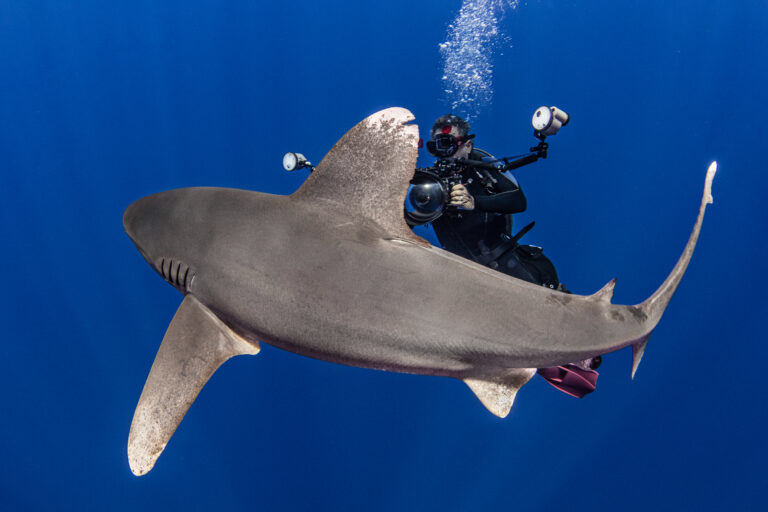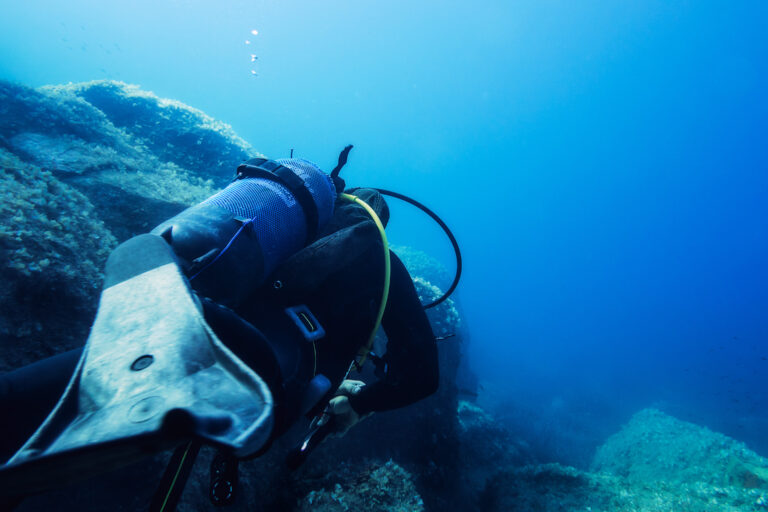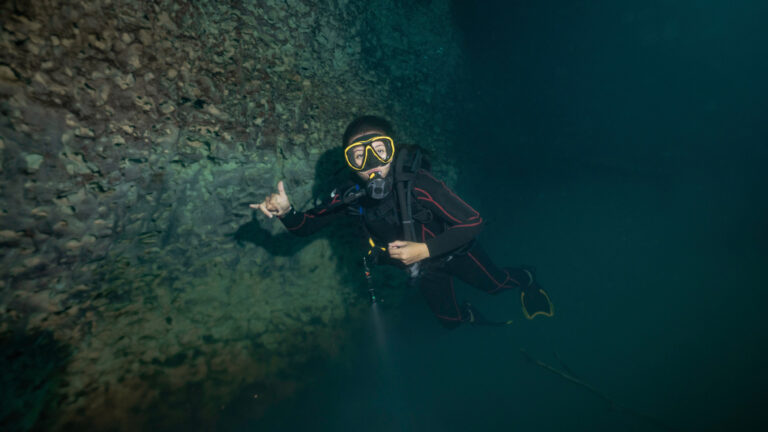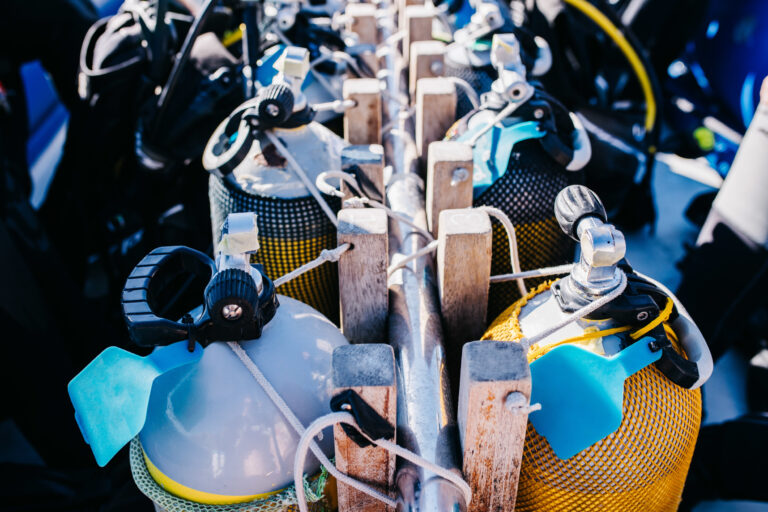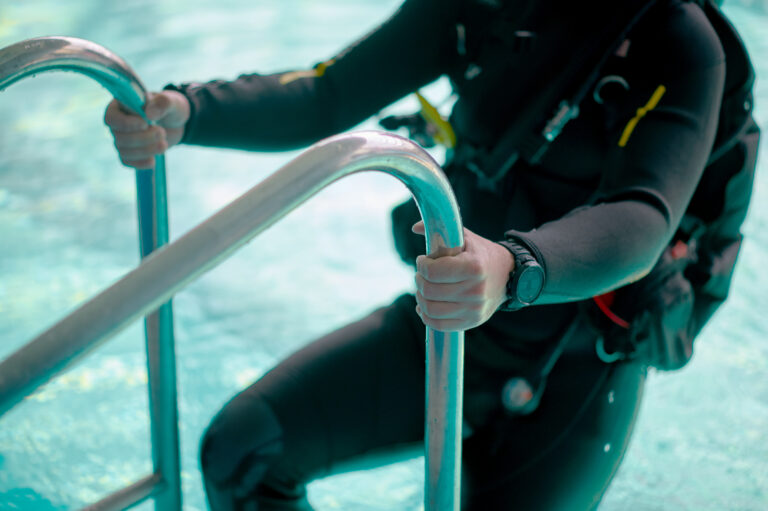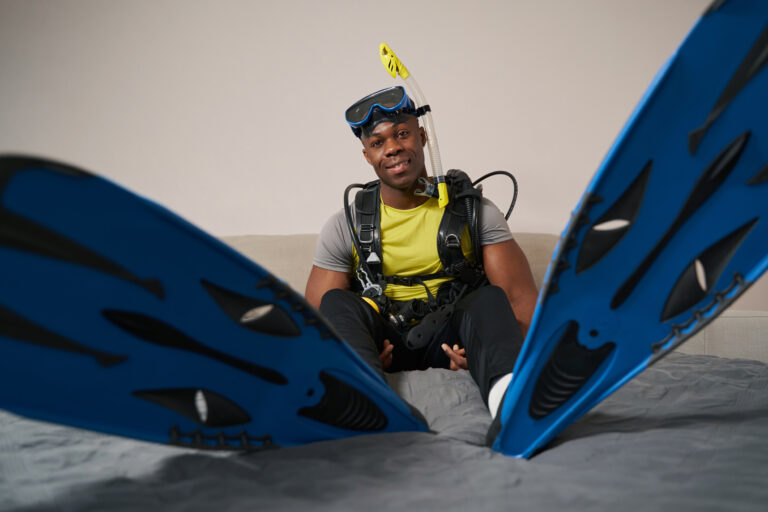SCUBA DIVERS’ TRAVEL GUIDE TO Solomon Islands
If you are looking for a diving destination that will take your breath away, look no further than the Solomon Islands. This South Pacific nation is home to some of the most diverse and uncrowded dive sites in the world. You can explore stunning coral reefs, colorful fish, majestic sea fans, and fascinating wrecks from World War II. Whether you prefer to dive from a liveaboard or a resort, you will find plenty of options to suit your style and budget. The Solomon Islands offer year-round diving, with warm and clear water, and abundant marine life. You can encounter dugongs, turtles, sharks, and even manta rays in this underwater paradise. The Solomon Islands are a true gem for divers who want to experience the natural wonders of Oceania.
LOCATION AND GEOGRAPHY
Nestled in the heart of the South Pacific, the Solomon Islands are an archipelago steeped in both natural beauty and historical significance. This scuba diving haven is located to the east of Papua New Guinea and northwest of Vanuatu, comprising nearly a thousand islands that range from large, volcanic, and mountainous landmasses to tiny, idyllic atolls. The islands are scattered over an area of about 28,400 square kilometers, with the main islands being Choiseul, Guadalcanal, Santa Isabel, San Cristobal, Malaita, and New Georgia. The Solomon Islands’ unique position at the edge of the Coral Triangle, the global center of marine biodiversity, gifts it with an underwater landscape that is both diverse and teeming with life. The convergence of major oceanic currents brings nutrient-rich waters, making it a sanctuary for an astonishing array of marine species and providing some of the most pristine and least explored diving sites in the world.
VISA AND ENTRY REQUIREMENTS
Before embarking on a scuba diving adventure to the Solomon Islands, it is essential to understand the visa and entry requirements for this tropical paradise. Visitors from most countries can obtain a visitor’s permit upon arrival, which allows for a stay of up to 90 days within a 12-month period. However, it is crucial to have a passport valid for at least six months beyond the intended period of stay, along with proof of onward or return travel, and sufficient funds for the duration of the visit. Some nationalities may require a visa in advance, so it is advisable to check with the nearest Solomon Islands consulate or embassy prior to travel. Upon arrival, divers and tourists alike should also be prepared to pay a small entry tax. Always ensure that your travel documentation aligns with the latest regulations, as immigration policies can change. With the necessary paperwork in order, you can look forward to exploring the Solomon Islands’ underwater treasures, from WWII wrecks to vibrant coral reefs teeming with marine life.
GETTING TO Solomon Islands
Getting to the Solomon Islands for an unforgettable scuba diving adventure is an excursion into the remote and pristine waters of the South Pacific. International travelers typically fly into Honiara, the capital located on Guadalcanal Island, with the main gateway being the Honiara International Airport (HIR), also known as Henderson Field. There are direct flights to Honiara from several major cities in the Pacific region, including Brisbane in Australia, Nadi in Fiji, and Port Moresby in Papua New Guinea, operated by airlines such as Solomon Airlines, Fiji Airways, and Virgin Australia. Upon arrival, divers can connect to domestic flights to reach other islands within the archipelago, or they may opt for boat transfers to various dive resorts and liveaboards. It’s important to plan your travel well in advance, as flight schedules can be less frequent than to more commonly visited destinations, and be prepared for the adventure that awaits in the crystal-clear, biodiverse waters of the Solomon Islands.
BEST TIME TO DIVE
The Solomon Islands, a scuba diver’s paradise nestled in the heart of the Coral Triangle, offers an exceptional underwater experience year-round, thanks to its equatorial climate. However, the prime time to plunge into its crystal-clear waters is during the dry season, from April to December, when visibility reaches its zenith, often exceeding 30 meters. During these months, the trade winds settle, and the seas are calmer, making for comfortable boat rides to the myriad of dive sites. Divers can expect to encounter a spectacular array of marine life, from pygmy seahorses to majestic mantas, amidst the islands’ lush coral gardens and WWII wrecks. While the wet season, from January to March, can bring heavier rains and reduced visibility, it also offers the chance to witness the reproductive cycles of various marine species, providing a unique spectacle for the intrepid diver. Regardless of when you visit, the Solomon Islands’ warm waters, typically ranging from 26°C to 30°C, ensure a delightful diving experience at any time of the year.
ACCOMMODATION OPTIONS
Accommodation options in the Solomon Islands cater to a range of preferences, offering scuba divers the perfect respite after a day exploring the archipelago’s underwater wonders. From eco-friendly bungalows nestled along pristine beaches to luxurious liveaboard vessels that provide direct access to remote dive sites, there’s something for every level of comfort and adventure. Budget-conscious travelers can find guesthouses and modest lodges on several of the islands, often run by locals who provide a warm, authentic experience. Mid-range resorts frequently offer dive packages, ensuring seamless integration of diving activities with your stay. For those seeking the utmost in convenience and proximity to dive locations, liveaboards are the ideal choice, allowing divers to wake up at a new dive site each day. Regardless of where you choose to stay, the Solomon Islands’ accommodations are imbued with the laid-back island charm and hospitality that will make your diving trip unforgettable.
DIVE OPERATORS AND DIVE SHOPS
In the Solomon Islands, a diver’s paradise nestled in the heart of the Coral Triangle, the selection of dive operators and shops is as diverse and vibrant as the underwater ecosystems they explore. These local specialists, often staffed with PADI or SSI certified professionals, offer personalized experiences that cater to both novice and veteran divers. From the WWII wrecks in Iron Bottom Sound to the kaleidoscopic coral gardens of Munda, dive shops such as Dive Munda and Solomon Islands Dive Expeditions provide not only equipment rentals and air fills but also invaluable local knowledge and guided excursions. Many operators prioritize eco-friendly practices, ensuring the preservation of the islands’ pristine marine habitats. With their intimate knowledge of the best dive sites, currents, and seasonal marine life movements, these dive shops are your gateway to an unforgettable underwater adventure in the Solomon Islands, where the warm waters and exceptional visibility promise a world-class diving experience.
TRANSPORTATION WITHIN Solomon Islands
Transportation within the Solomon Islands offers a unique blend of adventure and practicality, essential for reaching the archipelago’s scattered dive sites. The primary mode of inter-island travel is by boat, with numerous operators offering services ranging from scheduled ferries to private charters, which are ideal for dive groups seeking tailored itineraries. For longer distances or to save time, domestic flights connect the main islands, including popular dive destinations such as Gizo and Munda in the Western Province. Smaller airstrips on remote islands may also be accessible by light aircraft, bringing divers closer to pristine reefs and WWII wrecks. On the main islands, minibuses and taxis provide land transport, though the service can be sporadic and may require patience and negotiation. Renting a 4WD vehicle is a practical option for those wanting more freedom to explore coastal areas and access shore dive sites. Regardless of the mode of transport, travelers should be prepared for a relaxed pace and the possibility of unexpected delays, embracing the laid-back island lifestyle that makes diving in the Solomon Islands a truly memorable experience.
CURRENCY AND PAYMENT METHODS
When traveling to the Solomon Islands for a scuba diving adventure, it’s important to be prepared with the right currency and payment methods. The official currency is the Solomon Islands Dollar (SBD). Cash is king in many parts of the islands, especially in remote diving locations and smaller establishments, so it’s advisable to carry a sufficient amount of local currency. While major hotels and dive operators in larger towns like Honiara may accept credit cards, such as Visa or Mastercard, transaction fees can be high and card acceptance is not universal. ATMs are available in urban areas, but can be scarce once you venture out to more isolated dive spots. Therefore, it’s prudent to withdraw cash before departing for your diving destination. Traveler’s checks are not commonly used. To avoid any inconvenience, ensure you have a mix of payment methods and always have some cash on hand for smaller expenses, tips, and incidentals. Keep in mind that currency exchange services may be limited, so it’s best to exchange your money at banks or authorized dealers in the capital or at the airport upon arrival.
LANGUAGE AND COMMUNICATION
Language and communication are vital aspects to consider when planning a scuba diving trip to the Solomon Islands, a nation rich in cultural diversity with nearly 70 indigenous languages. However, English is the official language and is widely spoken in tourist areas, making it relatively easy for English-speaking divers to communicate with dive operators, local guides, and residents involved in the tourism industry. Pidgin, also known as Solomons Pidgin or Pijin, is a creole language that serves as a lingua franca among the various linguistic groups within the islands. While not necessary, learning a few basic phrases in Pijin can enrich your interactions with locals and show respect for their culture. Hand signals and dive slates remain the universal mode of underwater communication among divers, but it’s always beneficial to review these with your dive guide to ensure clarity during your underwater adventures in the Solomon Islands’ breathtakingly diverse marine environments.
LOCAL CULTURE AND ATTRACTIONS
Immersed in rich history and vibrant culture, the Solomon Islands offer more than just unparalleled underwater adventures. As you surface from the depths of the Coral Triangle, you’ll find a land steeped in the traditions of Melanesian, Polynesian, and Micronesian societies. The local culture is a tapestry of customary dances, music, and art, with villagers often welcoming divers with the rhythmic beats of bamboo and the hypnotic sway of the ‘panpipe’ performances. Beyond the cultural encounters, the islands are a living museum of World War II relics, with numerous war memorials and abandoned artifacts that tell the tales of the fierce battles fought across this serene landscape. The Solomon Islands are also a sanctuary for birdwatchers and nature enthusiasts, with lush rainforests hosting an array of exotic bird species and other wildlife. The intertwining of spectacular natural beauty, poignant history, and the warmth of its people makes the Solomon Islands a destination where every dive is complemented by an enriching cultural experience above the waves.
CULTURAL ETIQUETTE AND TIPS
When visiting the Solomon Islands for scuba diving, it’s essential to approach the local culture with respect and sensitivity. The Solomon Islanders have a rich Melanesian heritage, and many communities maintain traditional customs. Always ask permission before taking photographs of people or entering villages, and it’s polite to offer a small gift or ‘kastom fee’ when visiting local communities. Dress modestly when not diving, especially when visiting rural areas, as revealing clothing may be frowned upon. Learn a few phrases in Pijin, the lingua franca, to show respect and enhance your connection with the locals. When diving, be mindful of the environment and avoid touching or taking marine life, as the sea is a vital source of food and livelihood for the islanders. Lastly, be patient and embrace ‘island time’; schedules are often flexible, and a relaxed approach is part of the charm of the Solomon Islands.
LOCAL LAWS AND REGULATIONS RELEVANT TO TOURISTS
When planning a scuba diving trip to the Solomon Islands, it is crucial for tourists to familiarize themselves with local laws and regulations to ensure a safe and lawful experience. The Solomon Islands government requires all divers to be certified by a recognized scuba diving organization and to dive within the limits of their certification. Diving within marine protected areas (MPAs) is strictly regulated, and in some cases, permits may be required, which can be obtained from the local conservation offices or dive operators. It is illegal to collect coral, shells, or any marine life, and penalties for non-compliance can be severe. Additionally, divers should be aware of the customary rights of local communities, which may include traditional ownership of reefs and coastal waters; always seek permission from local village elders or authorities before diving in these areas. Respect for the environment is paramount, and the use of anchoring on reefs is generally prohibited to prevent damage. Lastly, ensure that you are aware of the safety regulations regarding diving practices and emergency procedures, as the remoteness of the islands can mean that medical facilities, particularly hyperbaric chambers, may not be readily accessible.
SAFETY TIPS AND EMERGENCY CONTACTS
When planning a scuba diving trip to the Solomon Islands, safety should be your top priority. Always dive within your certification limits and ensure that your equipment is well-maintained and appropriate for the conditions. Due to the remote nature of many dive sites, it’s crucial to dive with a reputable operator who knows the local waters and can provide a safety briefing, including information on currents, visibility, and marine life encounters. Be sure to establish a buddy system and agree on hand signals and emergency procedures with your dive partner. It’s also essential to have a dive computer and a surface marker buoy. In case of an emergency, know the location of the nearest recompression chamber, which is in Honiara, and have the contact information for the local hyperbaric doctor. Keep the emergency numbers for the Royal Solomon Islands Police Force Maritime Division (+677 21609 or +677 999) and the National Referral Hospital (+677 23600) readily accessible. Additionally, ensure that you have travel insurance that covers scuba diving accidents and emergency medical evacuations. Remember, the key to a safe and enjoyable dive trip in the Solomon Islands is preparation and awareness of your surroundings.
HEALTH AND TRAVEL INSURANCE
Before embarking on your underwater adventure to the Solomon Islands, a remote and pristine scuba diving haven, it is crucial to secure comprehensive health and travel insurance that covers scuba diving activities. Given the islands’ secluded location in the South Pacific, access to medical facilities can be limited, and the nearest decompression chambers are in Australia or Fiji, which necessitates costly medical evacuations in case of diving-related emergencies. Ensure that your policy includes coverage for hyperbaric treatment and emergency medical evacuation. Additionally, due to the tropical environment and the risk of mosquito-borne illnesses, such as malaria and dengue fever, your insurance should cover disease-related medical treatment. Verify that your policy is valid for the duration of your stay in the Solomon Islands and that it provides sufficient coverage for possible travel interruptions or cancellations, as the remote nature of the islands can lead to unpredictable travel changes. Always carry proof of your insurance and emergency contact information with you, and consider registering with the local dive shops or tourism authorities upon arrival for added safety support.

